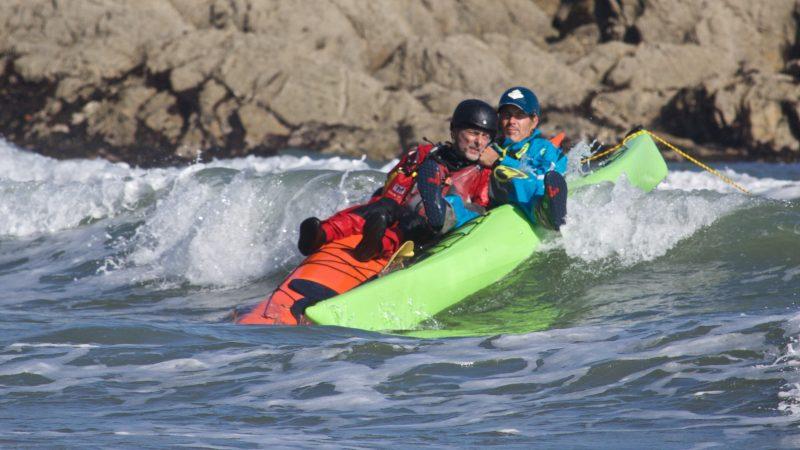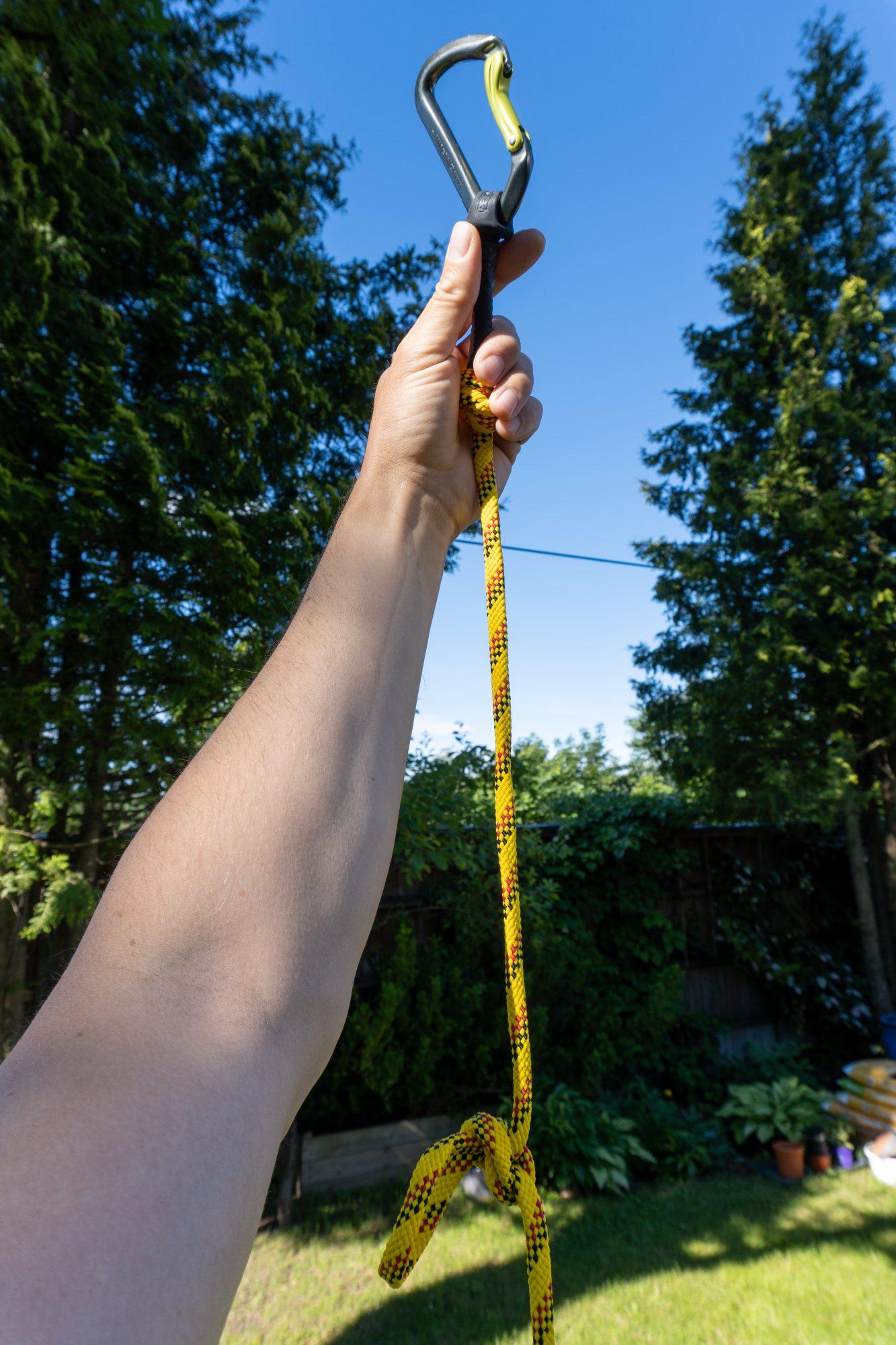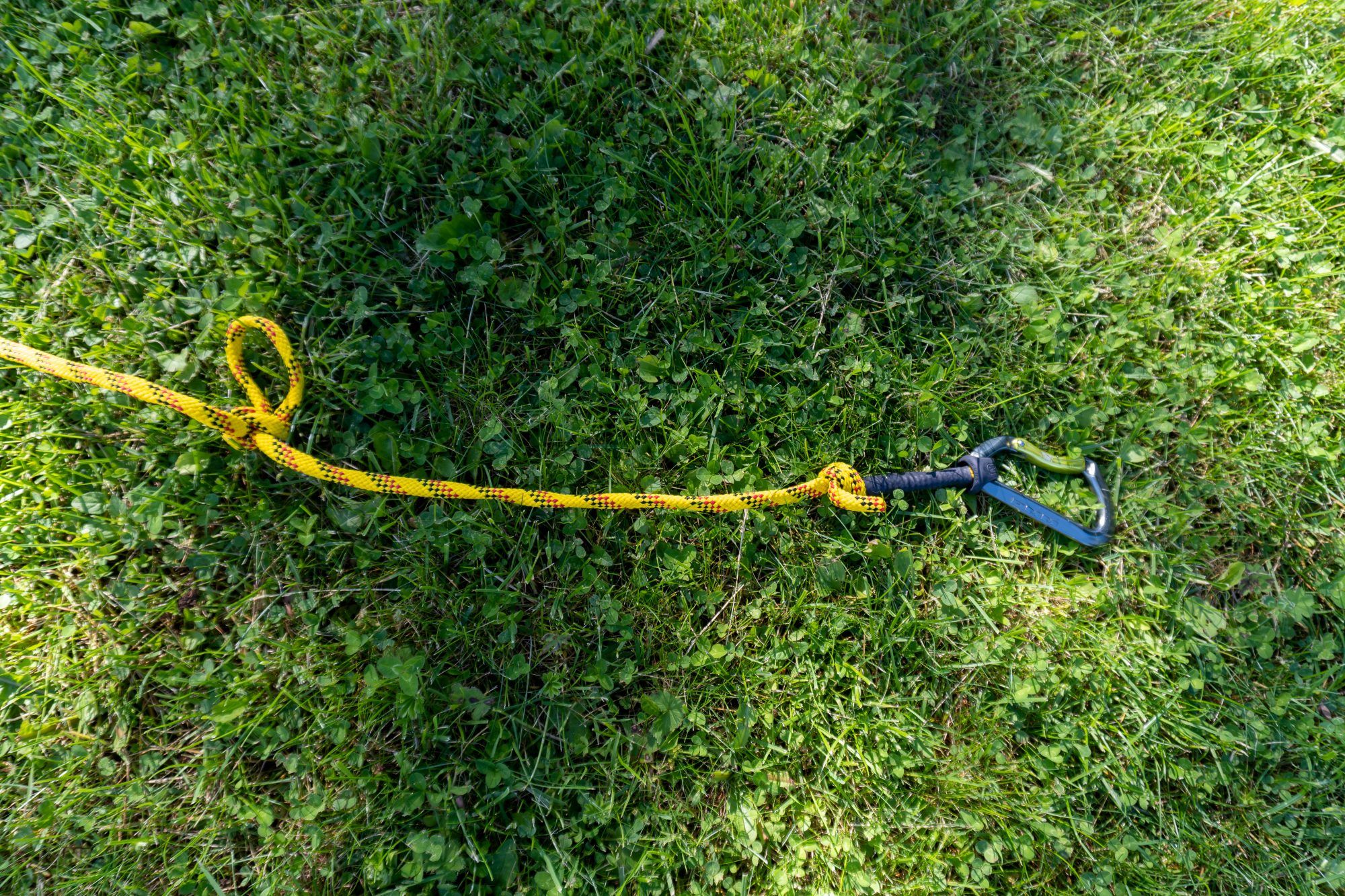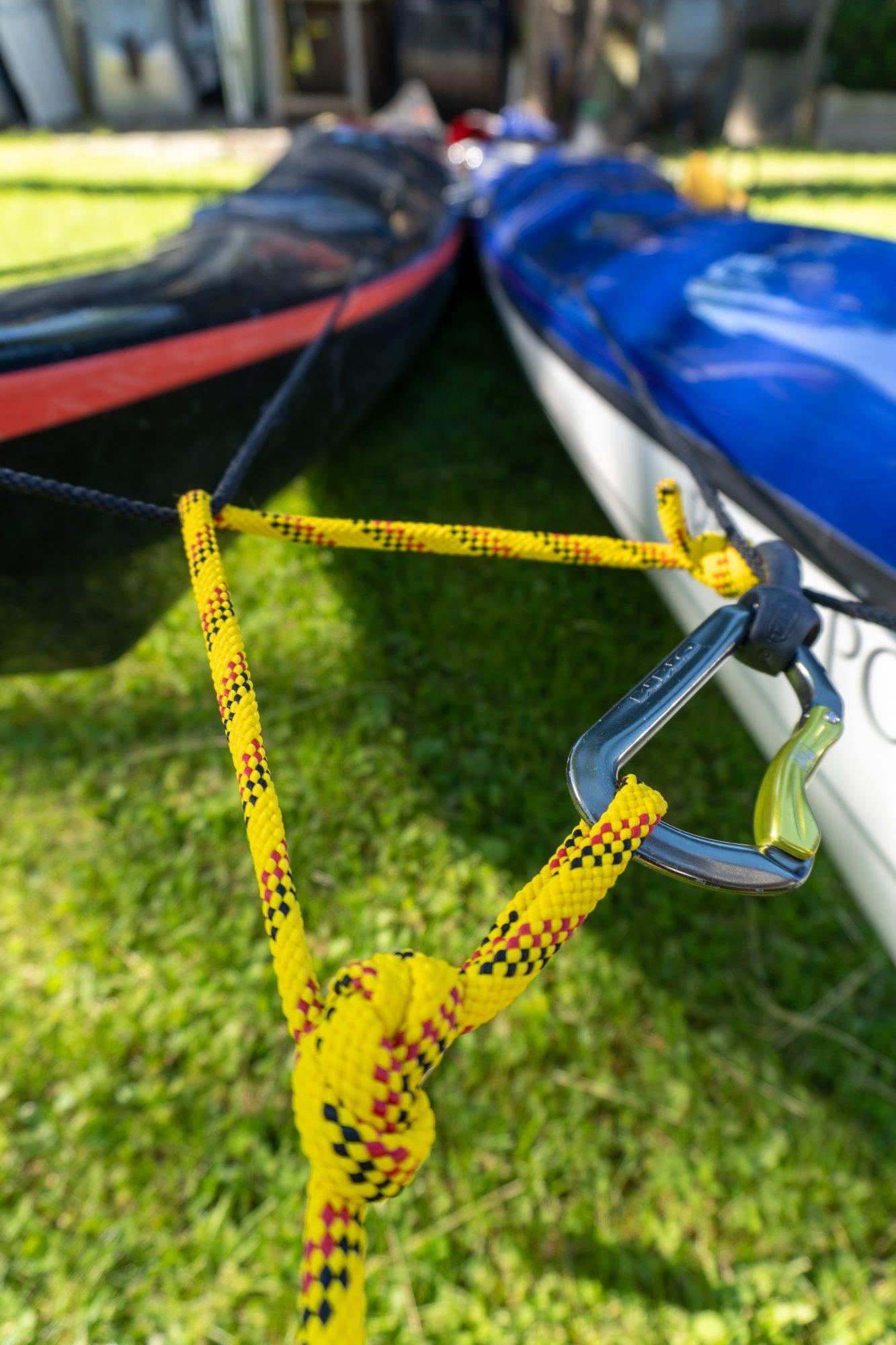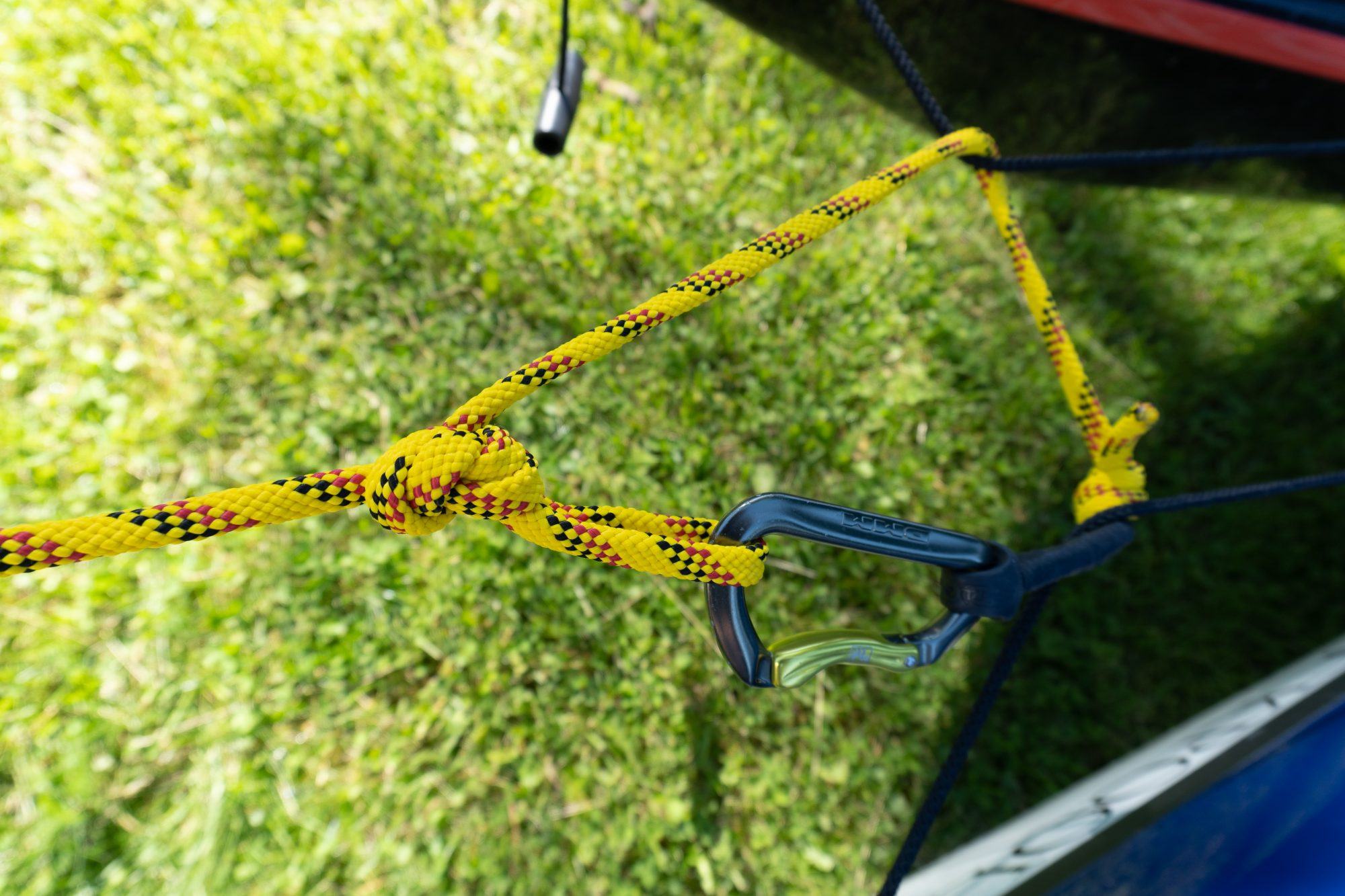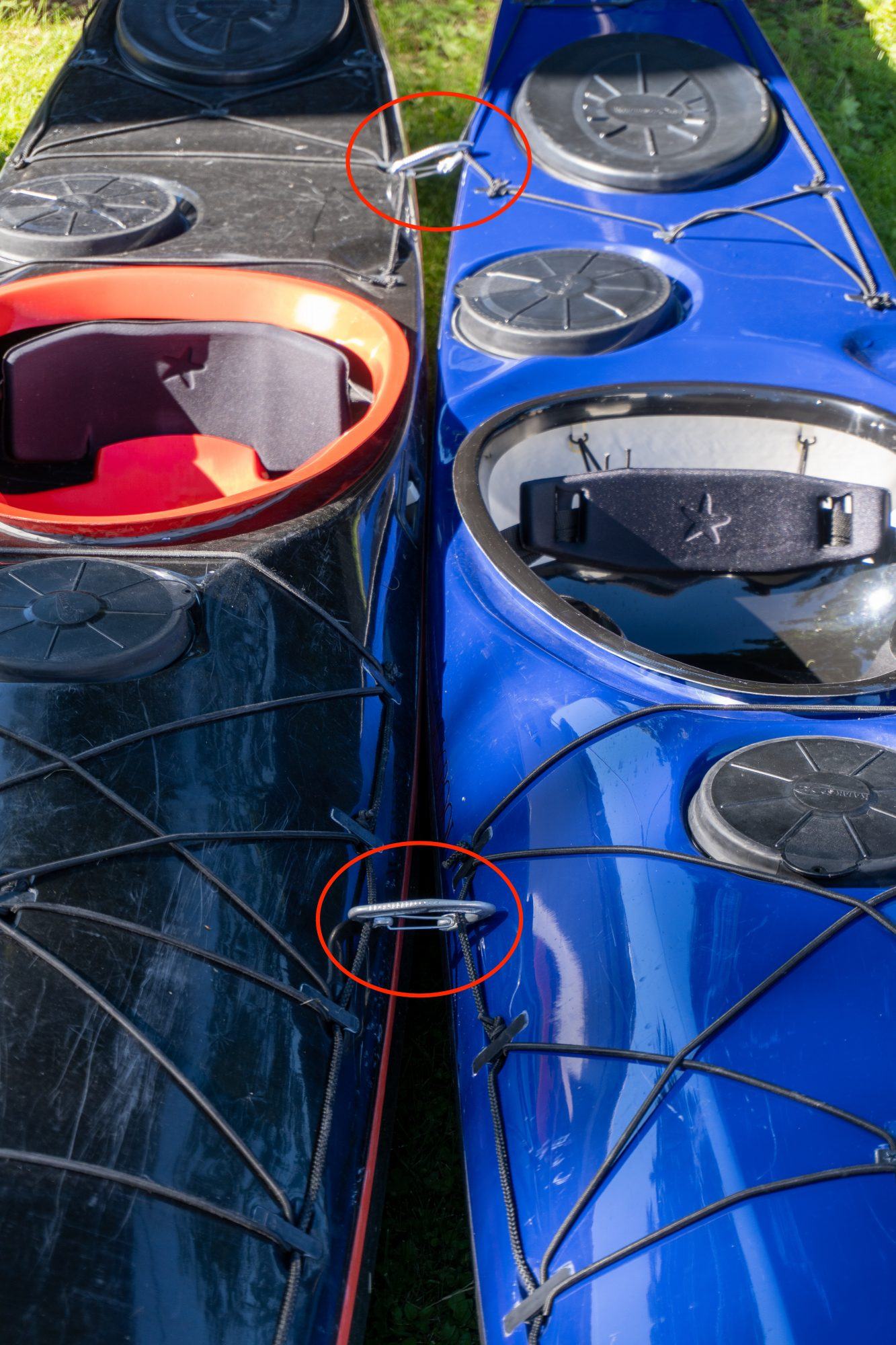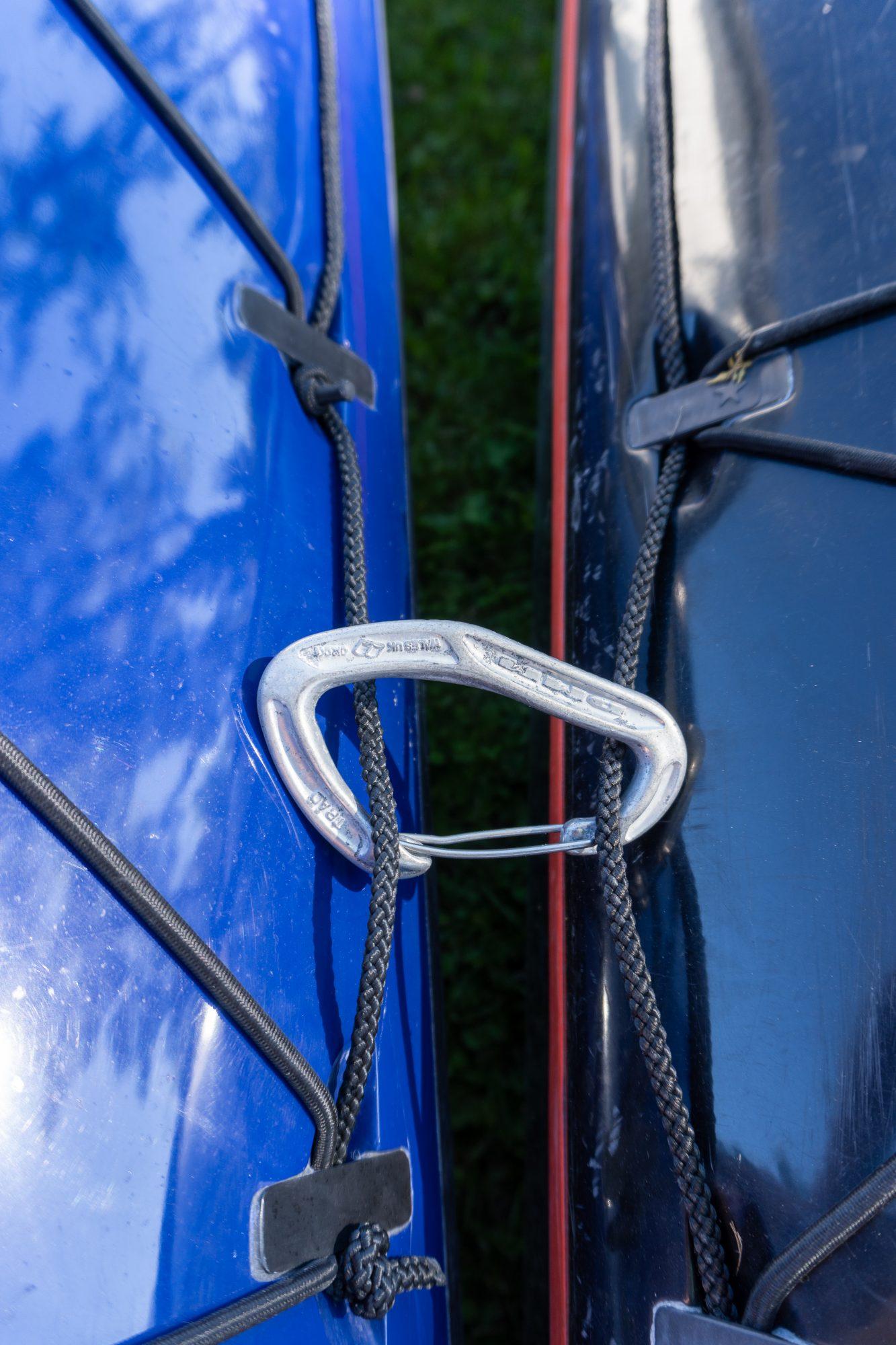There are quite a few ways to put a towline to good use out on the sea and I always bring one or even two on more committing trips. The Palm Equipment Ocean Pro is a compact and easy to wear towline that works well for sea kayakers.
In this article we’ll look at how you can tow a paddler incapable of paddling. The paddler might be injured or sea sick for instance so they need to be supported (and kept upright!) by a second paddler. This assisting paddler will be busy supporting the injured paddler and can therefore not paddle as well. So you’ll be towing two kayaks behind you.
The two paddlers can be towed as a single raft by joining them together so they don’t get separated. You’ll need a robust system that works in surf, currents, clapotic sea and wind. Here’s what I use:
Tie an overhand knot on a bight about an arms length from the carabiner at the end of your towline.
Then you can thread the karabiner through the deck lines at the front of both kayaks and clip it back onto the overhand bight. This will keep the two bows together and pull equally on both.
This alone is not enough, as the injured or sick paddler might be leaning towards the supporting paddler for support. It’s hard work for the supporting paddler as they are holding the raft together. Use two more karabiners through the deck lines, one in front of the cockpits and one behind to join them in a more stable raft.
I’ve used this system in surf landings with wave heights over a metre. In challenging surf conditions you should add a drogue behind the raft to keep it from going sideways or bongo sliding.
Critics of this system will say that connecting two kayaks together is risky, as they cannot be quickly disconnected. The most obvious cause of instability is the sick paddler leaning too hard on the supporting paddler, potentially falling into the water. It is possible for the supporting paddler to quickly release the two joined kayaks by cutting the deck lines with their safety knife.
